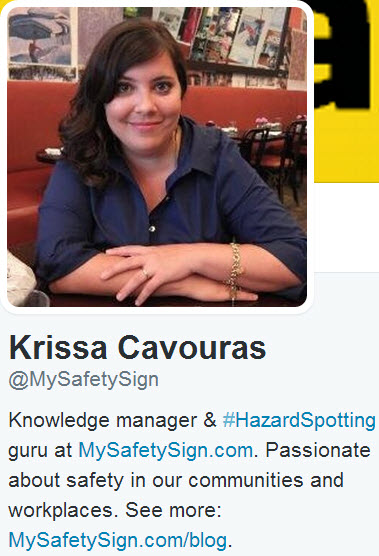Workplace safety success on social media
Here on the MySafetySign blog, we’ve discussed at length how to promote workplace health and safety systems, checks, and regulations, including our survey of EHS professionals. However, there’s another important realm of interaction that’s worth discussing. In this digital age, social networks are woven into the fabric of our daily lives, and it’s no different for the safety industry.
I’m the social media manager for MySafetySign, which means I spend a lot of time engaging with safety professionals, OSHA inspectors, and of course, with our customers. These social engagements are often spontaneous and informal, and they give us insights on the industry around us and help us creating more engaging, enriching content for our readers. Below are some highlights of what we’ve learned from interacting with safety professionals — as well as other organizations in the safety industry — on social media.
Google Plus is a big plus for safety
Google’s social platform has been a bit of a dark horse since its launch — hey, it’s hard to take on a behemoth like Facebook! But businesses, academic communities, and journalists have quietly been making Google Plus a growing source of content-rich information and interaction, and we’re seeing more and more safety enthusiasts on Google Plus. Another benefit is that visual content looks really great on Google’s clean, well-designed interface, so your message gets a great presentation. Three excellent accounts to follow are Intelex Technologies, VISTA Training, Inc., and PPE.org . Communities are another destination to connect over safety subjects. Our favorite is Health, Safety, Environment & Quality, Safety Professionals and Occupational Health and Safety are forums with plenty of activity as well.
Workplace safety in 140 characters or less

Follow my colleague, Krissa (@MySafetySign) on Twitter!
If you haven’t checked out Twitter for EHS news, make it a priority. Some of the most impromptu but enlightening conversations between companies and consumers happen every day on Twitter, and that’s lead to countless popular marketing campaigns, but also a few brand-damaging missteps. However, many safety agencies and regulatory bodies have a Twitter presence, and are using the service for everything from publication updates, breaking news of accidents or emergencies, to spreading awareness about issues via hashtags and live chats. This creates high visibility of day-to-day safety concerns in a way that’s unprecedented for the industry.
National Institute for Occupational Safety and Health (@NIOSH) has an excellent feed, as do several of its divisions:
- NIOSH Construction: @NIOSHConstruct
- NIOSH Work Organization and Stress-Related Disorders: @NIOSH_WSD
- NIOSH en Español: @NIOSHespanol
US Fire Administration (@usfire), National Safety Council (@NSCsafety) and American Society of Safety Engineers (@ASSE_Safety) are three must-follows on Twitter, as well.
Developing connections on LinkedIn
The world’s largest professional network boasts over 300 million members, and has an expansive community of safety experts. Groups such as OSHA Discussion & Support, and Construction Health and Safety are full of debates and candid perspectives on safety. I’ve appreciated the opportunity to connect with EHS professionals through this medium.
Facebook, although great for numerous social networking purposes, isn’t our platform of choice. That’s not to say it’s unworthy of perusing for safety news, but it doesn’t offer the same conversational interface that Google Plus and Twitter do, and many people are understandably less comfortable with using their personal Facebook accounts to interact with, or promote, professional or informational content. While high luxury brands have had success using Facebook as a promotional tool, I see more value in the network-building conversational atmosphere on Twitter, LinkedIn, and Google Plus.
To all the safety professionals out there: how do you use social media to connect with your peers? Are you a member of any LinkedIn groups? Do you find Twitter empowering, or overwhelming? We want to hear how you use social media to amplify your important messages — to clients, to employees, and to the public.
Category: Safety Tips











